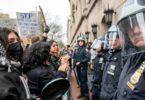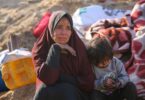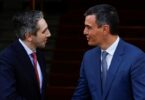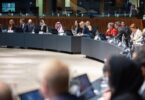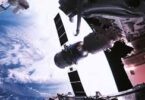Patrick O’Connor
The Australian Broadcasting Corporation’s “Four Corners” current affairs television program released a two-part series, “Ghosts of Timor,” on April 4 and 11 that outlined evidence of significant war crimes committed by Australian military forces in East Timor in 1999.
These crimes included murder, the mutilation of corpses, and sexual assault and torture of prisoners, including children. “Four Corners” also provided evidence of a deliberate cover up orchestrated within the highest levels of the Australian military command. No soldier has ever been charged over the incidents.
Military lawyers interviewed on the program suggested that this cover up encouraged a culture of impunity within the Australian military, including its elite Special Air Service Regiment (SAS), paving the way for the even more widespread crimes carried out during the occupation of Afghanistan from 2001.
In 1999, following the downfall of the Indonesian dictator Suharto, Jakarta authorised a referendum in East Timor, which had been occupied by the Indonesian military since 1975. The ballot showed a large majority favouring independence. An Australian-led military force subsequently intervened, with the ostensible aim of “restoring peace and security in the territory” and “facilitating humanitarian assistance.”
The focus of the “Four Corners” report was the events following a clash between Australian troops and pro-Indonesian militia fighters near the Timorese town of Suai on October 6, 1999.
An Australian convoy, which also had several New Zealand troops, was ambushed and two SAS soldiers were wounded. The soldiers responded to the ambush with a hail of gunfire, killing two militia members. When their corpses were sent back to the Timorese capital, Dili, examiners found clear evidence, including muzzle blasts, that close range shots had been fired into the bodies after the two men were killed. One of the shots severed a large chunk of the person’s skull and brain.
These actions, of course, represented clear violations of international law. A legal officer from New Zealand deployed with the intervention force known as INTERFET (International Force East Timor), Andrena Gill, immediately requested an investigation into the incident, which was the first fatal shooting of the operation.
This, however, was rejected by the head of INTERFET, Australia’s Major General Peter Cosgrove (later to be the Australian governor-general from 2014 to 2019).
Shortly afterwards, “Four Corners” reported, witnesses from within the New Zealand military forces began to talk about what had happened. Within a year, this triggered a secret, internal Australian military police special inquiry. Investigators took sworn testimony from three New Zealand troops, who reported hearing at least two or three gunshots fired well after the initial ambush and firefight. One soldier said: “I heard someone call out, ‘They’re our rounds, just shooting the bodies,’ or words to that effect.”
Another New Zealand soldier testified that an Australian soldier, identified only as “Operator K,” later told him that one of the targeted Timorese had in fact only been wounded initially. Operator K explained that the man had tried to get up and run away, unarmed, and that he had shot him in the back, killing him. This, again, is a blatant violation of the laws of warfare.
At least three other New Zealand witnesses told authorities that they saw Operator K further mutilate the corpses as they were being transported to Dili.
One said: “I can also recall seeing [Operator K] standing on top of this LAV [light armoured vehicle] towards the rear. I heard [Operator K] scream, ‘How dare you shoot my boys,’ or words to that effect. He was also kicking and punching the bodies as he said this. At this time I was about 10–15 [metres] away from the LAV and I thought to myself, ‘Fuck he’s lost it.’… He then kicked one of the bodies off of the back of the LAV.”
By 2001, the defence department contacted the Australian Federal Police (AFP) to provide advice on the case. After reviewing the evidence, the AFP noted that rumours had “suggested the killings were an act of revenge for the wounding of the two Australian soldiers,” and that forensic evidence indicated that the two militiamen may have been shot “at short range with a 9mm pistol after they had been wounded,” with available material “provid[ing] some evidence toward substantiating an allegation of Murder.”
In a highly telling comment, the AFP stated that “the political impact of this investigation has been assessed as substantial and has to be managed.”
In October 2002, the bodies of the two men, who had been hastily buried three years earlier, were exhumed and autopsies carried out. These found evidence that one man may have been shot in the back of the head, while both corpses had shattered skulls and broken ribs, consistent with the witness testimony that Operator K had kicked and stomped on the bodies.
Operator K was finally charged. Australian authorities, however, refused the New Zealand military’s request to uphold the anonymity of their witnesses. “Four Corners” reporter Mark Willacy explained, “their superiors in the New Zealand defence force had genuine fears for their safety if they did take the stand.”
The case collapsed, nothing was made public, and the court records remain suppressed. Operator K received a formal apology.
Australian forces operate black site torture centre
The second part of the “Ghosts of Timor” broadcast exposed Australian military torture. On the same day as the Suai ambush, October 6, 1999, a separate incident nearby resulted in the detention of 14 Timorese boys and men that Australian forces incorrectly believed were pro-Indonesian militia and had been involved in the ambush.
At least 10 of the 14 individuals were brought to Dili but were not registered at the official INTERFET detention centre. Instead, they were taken to a heliport controlled by the Australian SAS, which was being used as a secret torture and interrogation centre—a “black site” in the language that subsequently emerged in the so-called war on terror.
The ten males, mostly young men but including at least one 16-year-old child and another approximately 13-year-old, were terrorised. First they were shown the bodies of the two men who were earlier mutilated by Operator K.
One witness who spoke with “Four Corners,” Alan Joyce, formerly of the Australian Defence Force Intelligence Corps, said: “There was a little kid, I think he was about 13, if that. He cried and screamed and almost dropped to the ground. We had to hold him up.”
Another witness reported that the boy, and some of the others, soiled themselves, fearing they were about to be murdered.
“Four Corners” tracked down and interviewed several of those subjected to Australian torture. They explained that they were stripped naked, blindfolded, not allowed to sleep, kept in stress positions, and kicked in the back if they attempted to move. They were also denied food and water and physically assaulted, including by being punched in the face. One man explained that after being stripped naked, a female Australian soldier fondled his genitals, with the sexual assault aimed at humiliating him.
Two other detainees who had suffered gunshot wounds while being detained by Australian troops were forcibly removed from the medical facility where they were receiving emergency treatment. They were taken to the black site for torture and interrogation. Witnesses reported seeing, several days later, that one of the man’s gunshot wounds was seeping with blood and pus and infested with maggots as a result of being denied intravenous antibiotics.
The criminality of the Australian military was so severe that forces from other countries sought to avoid any complicity, fearing legal repercussions. A British officer instructed his men to have nothing to do with the secret SAS detention site. A New Zealand military legal officer advised that what was happening may have legally obliged New Zealand troops to refuse to transfer detainees to INTERFET’s control.
INTERFET legal officer Andrena Gill attempted to investigate the issue, but was again blocked. She reported that when she raised the allegations with her boss, the chief INTERFET legal officer Australian Lieutenant-Colonel Drew Braban, he made dismissive jokes about the issue, saying, “Who cares if they are not being given or withdrawn food and water” and “what’s the big deal?”
Major General Peter Cosgrove ordered a cursory investigation. The chief of the torture centre insisted that detainees were being treated “humanely” and in line with the Geneva Conventions—the investigation concluded with “no recommendation for further enquiry.”
A later military police investigation reportedly assembled briefs of evidence for charges of torture to be brought against three Intelligence officer commanders. No one, however, was ever charged and the defence department has refused to explain why.
The “Four Corners” report is an important piece of investigative journalism, exposing for the first time appalling war crimes carried out with impunity by Australian forces in East Timor.
There was nevertheless a glaring absence in the two-part broadcast—an explanation as to why these crimes were carried out, and what they reflect about the nature of the Australian-led intervention in 1999.
The “bad apples” theory—chalking things up to one or two evil individuals, thereby explaining nothing —was trotted out, with the program concluding with the assessment of former military police investigator Karl Fehlauer: “Unfortunately, it only takes one or two bad apples to spoil a bunch.”
“Four Corners” insisted that the Australian military had “justifiable pride that they helped bring peace and stability to one of Australia’s closest neighbours,” and that the war crimes represented a “dark stain” on an otherwise noble endeavour.
In fact, the humanitarian rhetoric used to justify the 1999 intervention was nothing but a pretext. The Australian government had for decades collaborated with the Indonesian military junta in the oppression of the Timorese people, including through the illegal carve up of its lucrative oil and gas resources in the Timor Sea. When Canberra assessed that continued Indonesian control over Timor had become untenable, it orchestrated a military intervention in order to dominate the process leading to formal independence. This was aimed at advancing Australian imperialism’s geostrategic position in the region and at securing its highly profitable investments in the oil and gas industry.
The operation was of a neo-colonial nature—and it is only within that context that one can understand the criminal activities of the SAS, supported and covered up by the highest levels of the military command.
The Timor intervention was an important turning point. The bogus humanitarian pretext had been boosted by pseudo-left organisations who organised “troops in” demonstrations. These events, the Australian Financial Review noted at the time, helped create the political climate for the first large-scale overseas military deployment since the Vietnam War. The 1999 deployment was followed by an upsurge of Australian militarism, including involvement in the US-led wars and occupations of Afghanistan and Iraq, in which both American and Australian forces committed countless atrocities and war crimes.

